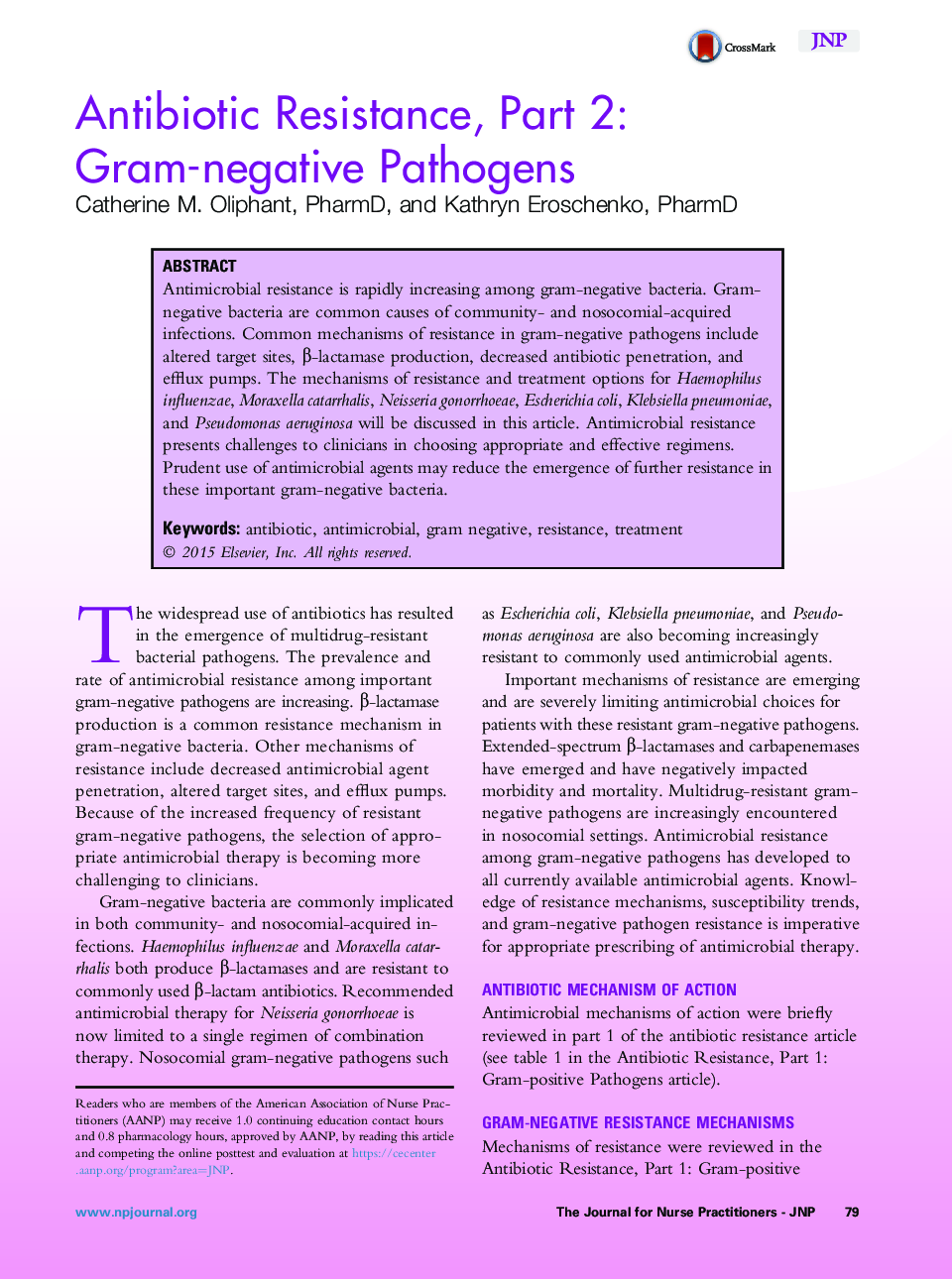| کد مقاله | کد نشریه | سال انتشار | مقاله انگلیسی | نسخه تمام متن |
|---|---|---|---|---|
| 2663424 | 1140565 | 2015 | 8 صفحه PDF | دانلود رایگان |
• Carbapenems remain the drug of choice for extended spectrum beta-lactamase (ESBLs) producing organisms.
• AmpC beta-lactamases inactivate cephalosporins (not cefepime), most penicillins (including β-lactam/β-lactamase inhibitor combinations), cephamycins, and aztreonam as well as aminoglycosides, fluoroquinolones and TMP/SMX.
• Neisseria gonorrhoeae has acquired resistance to virtually every antibiotic class used to treat it. Current CDC recommended therapy is ceftriaxone in combination with azithromycin.
Antimicrobial resistance is rapidly increasing among gram-negative bacteria. Gram-negative bacteria are common causes of community- and nosocomial-acquired infections. Common mechanisms of resistance in gram-negative pathogens include altered target sites, β-lactamase production, decreased antibiotic penetration, and efflux pumps. The mechanisms of resistance and treatment options for Haemophilus influenzae, Moraxella catarrhalis, Neisseria gonorrhoeae, Escherichia coli, Klebsiella pneumoniae, and Pseudomonas aeruginosa will be discussed in this article. Antimicrobial resistance presents challenges to clinicians in choosing appropriate and effective regimens. Prudent use of antimicrobial agents may reduce the emergence of further resistance in these important gram-negative bacteria.
Journal: The Journal for Nurse Practitioners - Volume 11, Issue 1, January 2015, Pages 79–86
